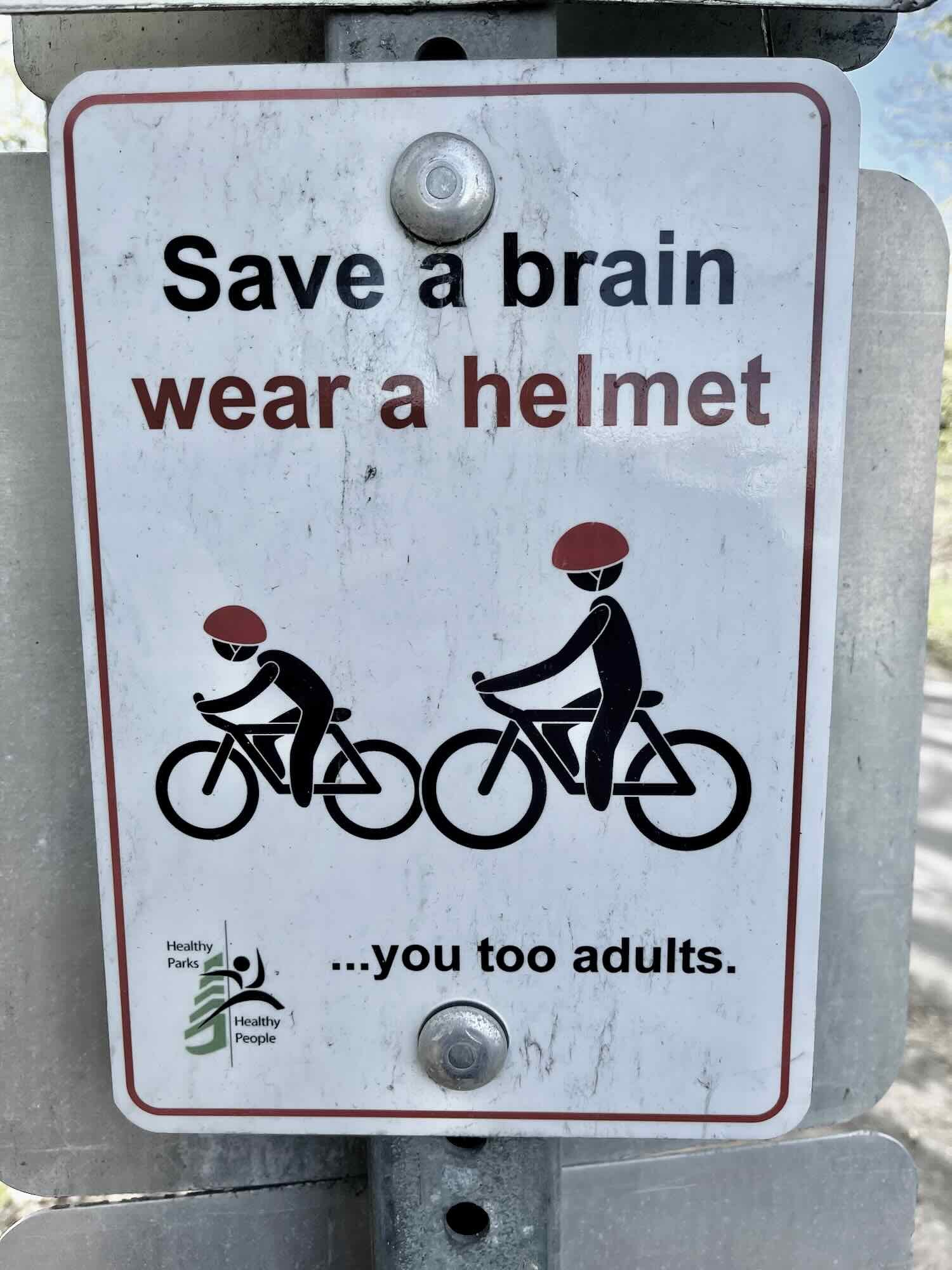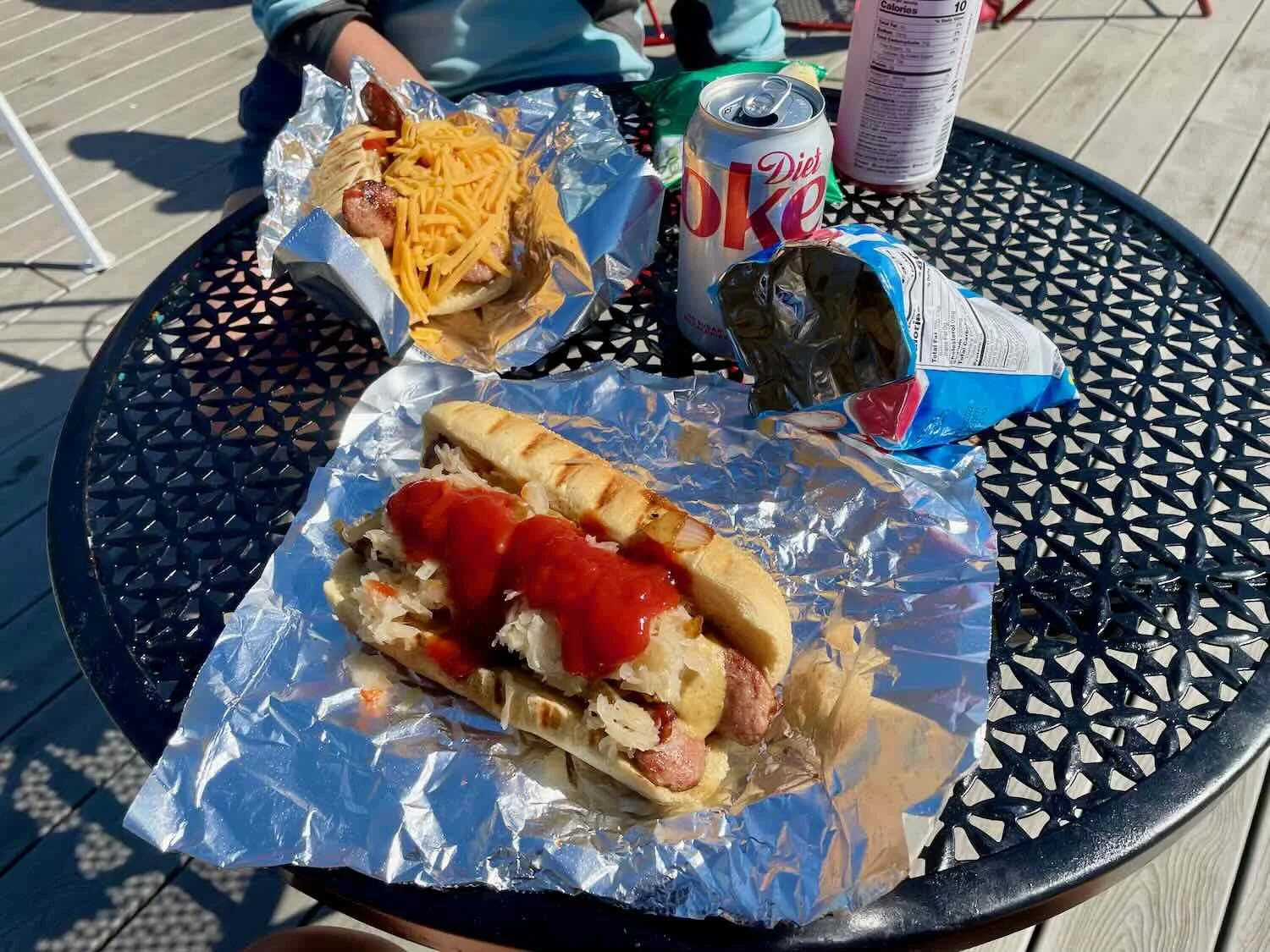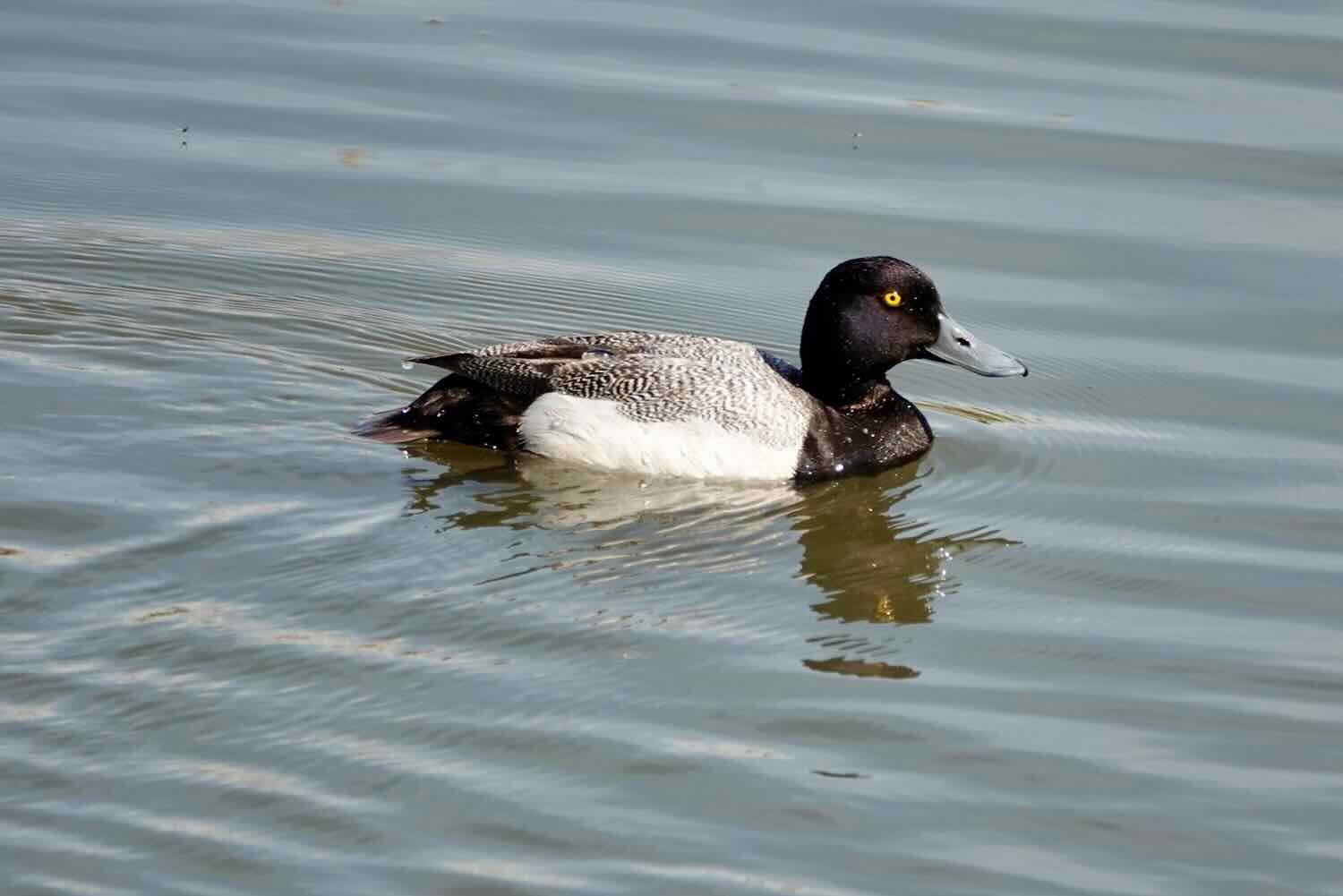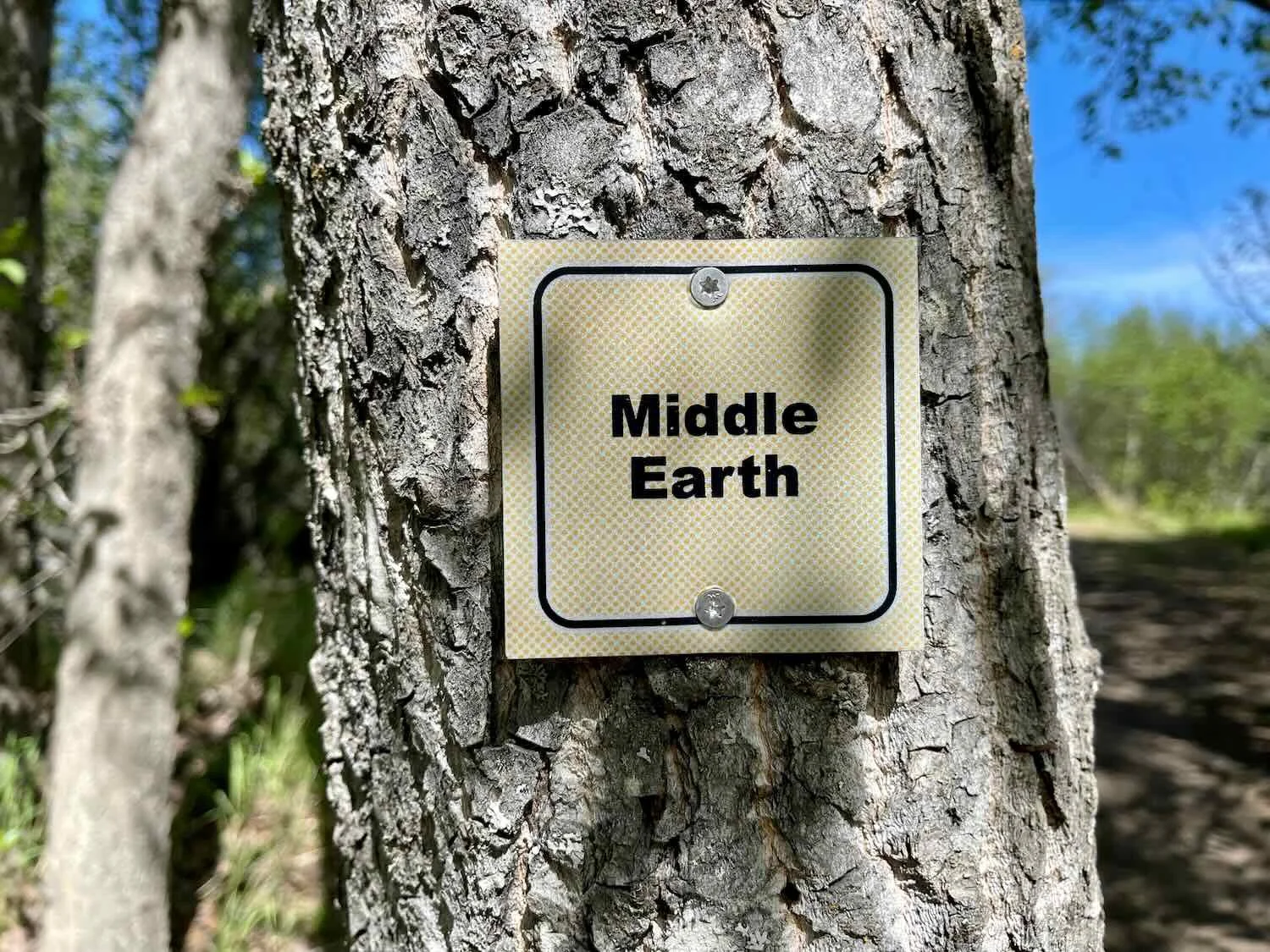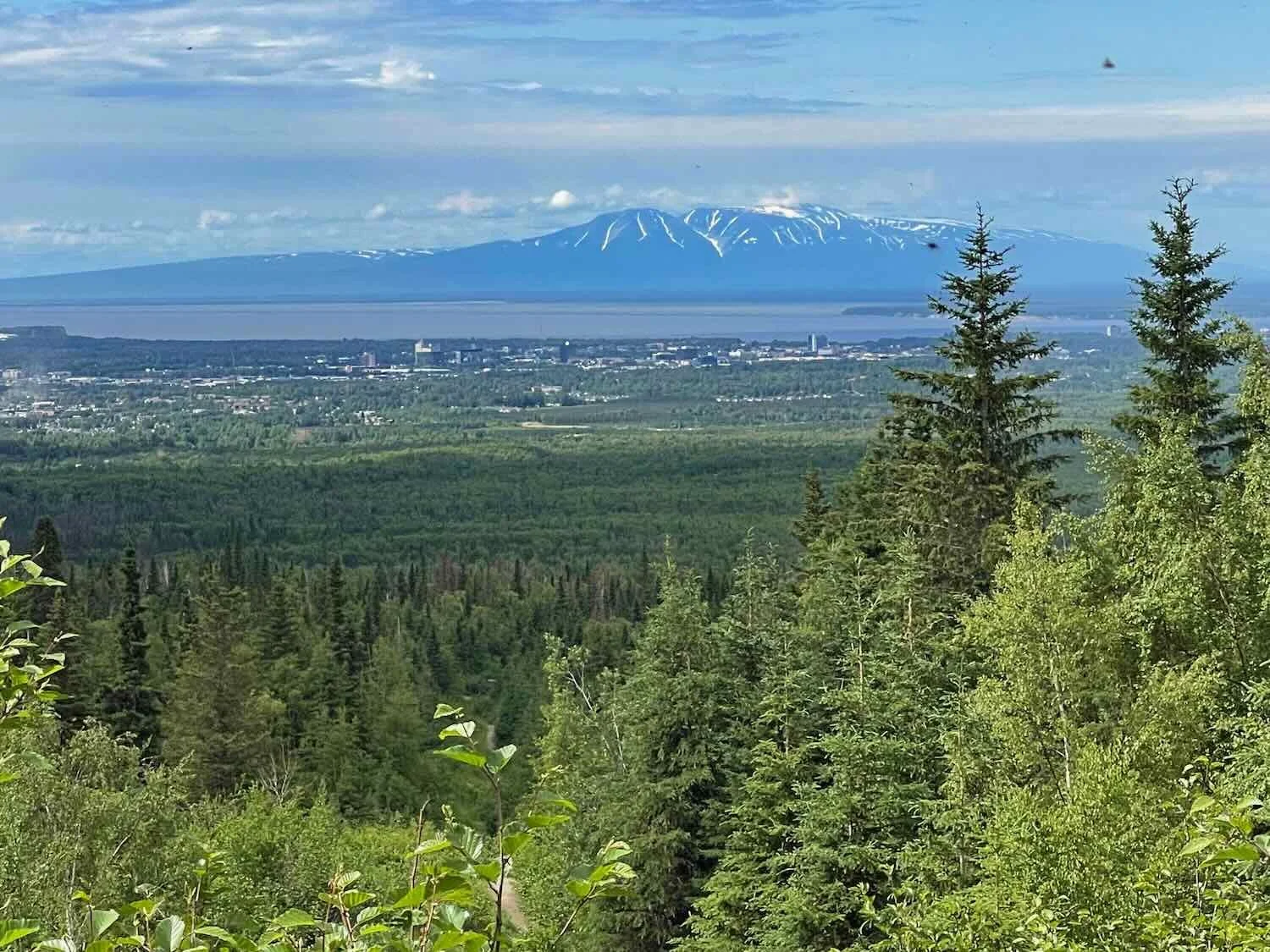Arriving in Alaska: Cruising Anchorage's Bike Paths
10 May - 20 June 2022
We’ve always been curious about Alaska and what it would be like to live there. Where we had been living, it was very flat and warm. There, the two biggest challenges for a cyclist were strong winds (often pushing 15+ mph), and sweltering heat. Alaska, however, would be neither hot nor flat.
An additional consideration was that we wanted to begin our adventure in early May, long before the snow and ice had cleared from Northern Alaska. So we needed to spend some time in a place that wasn’t subject to the well-below-freezing temperatures that are typical of springtime along the Arctic Ocean Coast (Prudhoe Bay) where we planned to start our bike trip. We decided to give ourselves 40 days in South Central Alaska (Anchorage, Alaska) to acclimate to the hills and chills, and to see what living in Alaska would be like.
When we arrived in Alaska in early May, there was a touch of winter in the air. The mountains surrounding Anchorage were still covered with snow. Temperatures routinely dipped below freezing at night. And the trees in town were mostly bare, as new leaf buds were just beginning to open. Leggings, long-sleeved jerseys, and layers were needed for warmth.
Looking out the window of our airplane as we approached Anchorage, we could see what was in store for us. The rugged peaks of the Chugach Mountains were blanketed with snow. Alaska, USA. Copyright © 2019-2022 Pedals and Puffins.
The new leaves, just beginning to emerge on Anchorage’s trees, cloaked the forest in a veil of pale-green lace. Alaska, USA. Copyright © 2019-2022 Pedals and Puffins.
Not long after our arrival we settled into a routine. Three days each week we walked 6.5 miles round trip to the Seawolf Sports Complex on the University of Alaska Anchorage campus. There, we swam in the lap pool and worked out in the weight room to add some variety to our exercise routine.
We made the most of our proximity to the Seawolf Sports Complex at the University of Alaska. Several times a week we dropped by to swim laps in the 25 yd (22.9 m) pool, and use the weight room. Alaska, USA. Copyright © 2019-2022 Pedals and Puffins.
On the other four days of the week we explored the city’s excellent network of bicycle routes. Cycling infrastructure in Anchorage is both extensive and well-maintained. There are four major greenways that provide paved, bicycle-only routes that run all the way across the city. We enjoyed mixing and matching the various cycleways so that we never had to ride the same route more than once a week unless we wanted to. The terrain that the trails cover was hilly enough to help us build our strength, with most of our day rides providing between 1,500-3,000 ft (450-900 m) of climbing.
One of our favorite loops incorporated the renowned Tony Knowles Coastal Trail. It heads south from Downtown Anchorage for 11 miles, hugging the shoreline and cliffs that overlook Cook Inlet. It’s a very beautiful trail that passes through some scenic natural areas. As a bonus, there is a popular, old fashioned Tastee-Freez ice cream shop along the route (one reason we ended up dubbing it the “ice cream loop”).
We lived just a couple of blocks from another greenway that links up with the Coastal Trail, providing easy access. At the intersection of the two trails, Westchester Lagoon bustles with interesting birdlife. We particularly enjoyed seeing red-necked grebes in breeding plumage (in the lower 48 states, we’re used to seeing these grebes in their more drab, winter colors). Even better, the grebes breed at Westchester Lagoon. So as June progressed, we spotted a few of their floating nests out on the water.
Checking out the birds on Westchester Lagoon. Anchorage, Alaska, USA. Copyright © 2019-2022 Pedals and Puffins.
A Canada goose smiles for the camera. Westchester Lagoon, Anchorage, Alaska, USA. Copyright © 2019-2022 Pedals and Puffins.
Birds aren’t the only interesting things in the sky over the Coastal Trail. Heading south from downtown Anchorage, the trail makes its way up onto a 100 ft (30.5 m) high bluff that juts out into the open waters of Cook Inlet. Point Woronzof, as it’s called, sits at the end of the runway for the city’s international airport. It’s a thrilling spot to stop for a moment, and watch a diverse mix of aircraft - ranging from giant cargo jets to smaller commuter planes - either take off or land right over your head. There are always a few people perched on the bluff, with cameras ready to snap a photo of the next incoming airplane.
Just south of Anchorage, the sandy bluffs of Point Woronzof rise out of the sea. The Coastal Trail cycling path climbs to the top of the bluff, which sits at one end of the main runway at Anchorage’s international airport. Alaska, USA. Copyright © 2019-2022 Pedals and Puffins.
Hold onto your hat! Airplanes seem to come close enough that you could reach up and touch them, as they descend towards a landing at Anchorage’s international airport. Point Woronzof, Akaska, USA. Copyright © 2019-2022 Pedals and Puffins.
You won’t want to pick up too much speed on the steep descent off of the bluffs. At one particularly tight turn, you could find yourself gaining a lot more air than you bargained for. That’s because the sandy bluffs are disintegrating at a rate of two feet per year. And the erosion has started to nibble away at the edge of the trail. Fortunately, a couple of metal barriers should help keep cyclists from flying over the cliff. But we were amused to see that the bike rack was on the far side of the barrier…
Watch your speed when descending off the bluff at Point Woronzof. A couple of temporary metal barriers are all that will keep you from flying over the edge of this cliff. Alaska, USA. Copyright © 2019-2022 Pedals and Puffins.
The entire length of the Coastal Trail is great for cycling, but the jewel in the crown comes at the southern end, when the path enters Kincaid Park. With over 40 miles of single track, this city park is a mountain biker’s dream. Sometimes we just rode through the park on the paved Coastal Trail. But other times we enjoyed winding our way through the back woods on the park’s many trails. With names like Easy Street, Middle Earth, Moose-Hill, and Hanging Chad, the trails offer a range of options from wide, gravel lanes to tough scrambles over dense tangles of tree roots. There’s something here for all ability levels. There are plenty of tight curves and ramps for those interested in “getting air.” In the winter, many of the mountain biking trails turn into cross country ski trails. There is also a biathlon training area where skiing and shooting are actively practiced in both the summer (with roller skis) and winter.
By early June the forests around Anchorage transformed into a lush, green landscape. The cottonwoods, paper birches, and cherry trees were fully leafed-out. And the forest floor was carpeted with thickets of horsetails, cow parsnip, and non-native rose bushes.
But we can’t leave Kincaid Park without mentioning the moose. Over the course of our travels in Anchorage, we saw seven moose browsing or resting close to the trail. All of them were either in, or just outside of, Kincaid Park. As luck would have it, we only saw them when we didn’t have our good camera with us. But we did manage to snap a couple of photos with a mobile phone. Just don’t complain that we didn’t get closer for the photos. Everyone says that moose can be very bad tempered, so we let them have their space.
A sun-dappled moose strolls through the birch trees on a hillside in Kincaid Park. Alaska, USA. Copyright © 2019-2022 Pedals and Puffins.
On the other side of Anchorage, nestled against the foothills of the Chugach Mountains in the west, lies another great cycling park. Far North Bicentennial Park has over 100 miles of trails and is even more rugged than Kincaid Park, mostly because of its placement on the lower slopes of the mountains. While the biggest hill in Kincaid Park rises to about 300 ft, we reached heights over 1,000 ft (305 m) on the single-tracks at Far North with a total gain of over 3,000 ft (900+ m) if you include all the many ups and downs. Needless to say, we had several opportunities to put on our climbing legs. And we were rewarded with glorious views of Anchorage and the “Sleeping Lady Mountain” from the upper reaches of the trails.
We spent many days cycling through the back woods at Far North Bicentennial Park. Anchorage, Alaska, USA. Copyright © 2019-2022 Pedals and Puffins.
Going with the flow on one of the many mountain bike trails in Far North Bicentennial Park. Anchorage, Alaska, USA. Copyright © 2019-2022 Pedals and Puffins.
Although our six weeks in Anchorage seemed to fly by, we did find some time to wander around the compact downtown area - including a sampling of the state’s native brews.
One Anchorage storefront was populated by a herd of moose and muskox - not your typical stuffed animals. Alaska, USA. Copyright © 2019-2022 Pedals and Puffins.
As we walked through the downtown area, we were impressed by the number of lively and upbeat murals that decorate the city. We later learned that one brightly-colored mural, called the Hope Wall Mural, was actually a community project. The artist created a template that broke the painting up into 4’x4’ squares with a “paint-by-numbers” design so that hundreds of local volunteers could paint the individual squares, then assemble them into the final mural. It sounds like a fun and engaging project. And it resulted in a truly gorgeous mural.
In the end, we felt quite at home in Anchorage. Perhaps it was the many references to puffins. All over town, we encountered the handsome likeness of our mascot - adorning everything from candies, to kitchen accessories and even a hotel. It seems that puffins have a big fan base in Anchorage. We fit right in.
We leave tonight for the very top of Alaska along the Arctic Ocean Coast near Prudhoe Bay. Once we start cycling, there will be some long stretches without internet or phone service. As a result, there may be extended periods of “radio silence.” We should emerge from the wilderness and find internet again in Fairbanks, Alaska, in a couple weeks.


